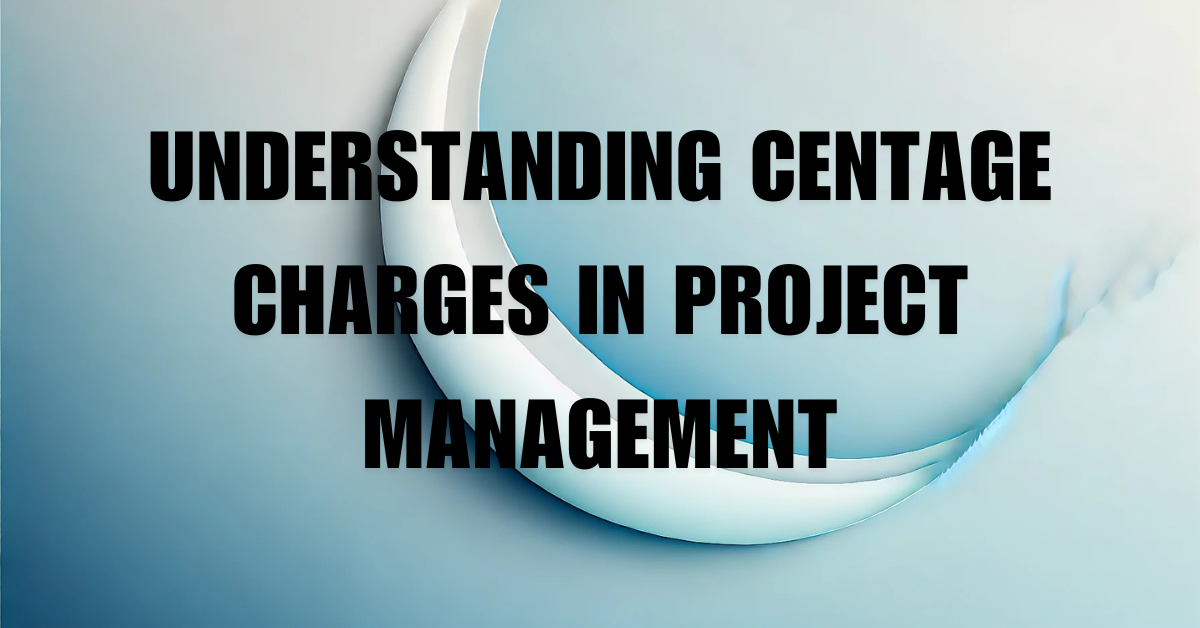In project management, accurately estimating costs and managing budgets are critical components of ensuring project success. Among the various charges that can be applied, centage charges or departmental charges play a significant role in covering the administrative and overhead costs associated with managing a project. These charges are typically applied as a percentage of the total project cost and are used to account for various indirect expenses that might not be immediately obvious but are essential for project execution.
What are Centage Charges?
Centage charges, also known as departmental charges, are fees calculated as a percentage of the total estimated project cost. These charges are levied to cover indirect costs that are not directly tied to the main project activities but are necessary for supporting the project. They help in covering the overheads and administrative expenses related to managing and supervising the project.
Key Elements of Centage Charges:
- Administrative Costs: These include salaries of administrative staff, office supplies, communication expenses, and other costs associated with running the project office.
- Supervision and Management: Costs for project managers, supervisors, and other personnel who oversee the project work and ensure it meets quality and timeline expectations.
- Planning and Design: Fees for architects, engineers, and planners involved in the initial stages of project conceptualization and design.
- Quality Control and Inspection: Expenses related to ensuring that the project adheres to the required standards and specifications through regular inspections and testing.
- Miscellaneous Overheads: This includes utilities, transportation, and other miscellaneous expenses that arise during the course of the project.
Why Are Centage Charges Important?
Centage charges are crucial because they provide a means to allocate costs that support the overall execution of the project. By applying these charges, organizations can ensure that all necessary administrative and managerial tasks are adequately funded, which contributes to the smooth functioning and successful completion of the project.
Benefits of Centage Charges:
- Comprehensive Cost Coverage: Centage charges help in covering all the overhead and administrative costs that are essential but not directly linked to the construction or production activities of the project.
- Transparency and Accountability: By explicitly accounting for these charges, project managers can provide a transparent view of the project costs, ensuring that stakeholders understand where and how funds are being utilized.
- Budget Management: Centage charges help in maintaining a balanced budget by accounting for all possible expenses, reducing the risk of unforeseen costs impacting the project’s financial health.
Example of Centage Charges in a Project
Project: Construction of a New Hospital Building
- Total Estimated Cost of Construction: $10,000,000
- Centage Charge Rate: 5%
Calculation of Centage Charge:
Centage Charge = (Centage Charge Rate) × (Total Estimated Cost)
Centage Charge = 5% × $10,000,000
Centage Charge = 0.05 × $10,000,000
Centage Charge = $500,000
Total Project Cost Including Centage Charge:
- Construction Cost: $10,000,000
- Centage Charge: $500,000
Total Project Cost = $10,000,000 + $500,000 = $10,500,000
In this example, the construction of a new hospital building has an estimated cost of $10,000,000. A centage charge of 5% is applied to cover administrative and overhead expenses, amounting to $500,000. Therefore, the total project cost, including the centage charge, is $10,500,000. This ensures that all necessary management, planning, and quality control activities are adequately funded.
Conclusion
Centage charges are an essential component of project budgeting and financial management. They ensure that all indirect costs, necessary for the successful execution of a project, are accounted for. By applying a percentage-based charge on the total project cost, organizations can maintain transparency, accountability, and control over project finances, ultimately leading to the successful delivery of projects within the allocated budget.
FAQs
What is the meaning of centage charges?
Centage charges are fees calculated as a percentage of the total project cost, used to cover indirect costs like administrative, management, and overhead expenses related to project execution.
What is the meaning of centage charges?
Centage charges refer to a percentage-based fee applied to the total cost of a project to cover administrative and overhead expenses not directly associated with project activities.
What is the meaning of centages?
Centages are percentage-based fees or charges applied to a total amount to cover various indirect costs, often used in project management and financial estimations.
What is the calculation of charges?
Charges are calculated by applying a specific percentage to the total amount or cost. For example, a 5% charge on a $10,000 project is $500.
What is the difference between Work Charge Establishment charge and Centage Charge?
Work Charge Establishment charges are direct costs for temporary staff and resources hired for a specific project, while Ccentage charges are indirect fees applied as a percentage of the total project cost to cover administrative and overhead expenses.
